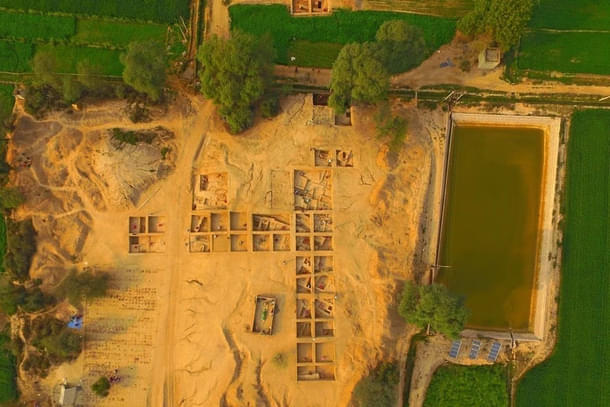Newsletters
A Harappan Era 'Factory' Village - What We Know About Binjor
Amarnath Govindarajan
Apr 28, 2024, 06:34 AM | Updated 06:34 AM IST
Save & read from anywhere!
Bookmark stories for easy access on any device or the Swarajya app.
A factory site on the banks of Ghaggar river

The Harappan 'mound' of Binjor, known since 1950s, was excavated between 2014-17. Disha Ahluwalia's recent write up reminded us of early publications on the subject.
A factory village on Ghaggar's banks: Archaeologists think the site could have seen mass production and industrial activity between 2600-2000 BCE - i.e the Mature Harappan period.
The 120m X 120m site shows evidence of 250 hearths (fireplaces/kilns). Industrial scale quantities of hearths were found from the Mature Harappan period.
Hearths were found from much earlier period too - in seven phases to be precise. The Mature industrial scale production phase, however, might have coincided with the civilisation's trading contacts opening up.
An 'industrial' site such as this is rare and show much potential in helping us understand the Sindhu - Saraswati civilisation's history.
...but what were they manufacturing? 'Mass production of copper implements' is how archaeologist Disha Ahluwalia puts it.
They've found thick deposits of industrial waste AND a large number of finished products.
Specialized hearths such as large ones for smelting, smaller ones for secondary melting and lastly another type for shaping/polishing have been found.
A fire altar, probably used for ceremonial purposes, with a shaft has also been found in the site.
Some more trivia. This site is only about 100km from Kalibangan, a major Harappan site.
The entire 100km stretch between Kalibangan and Binjgor is a wheat cultivating, lust green area today - watered by Ghaggar's underground aquifer - Saraswati's waters still helping Indics flourish?
Mud bricks found here were shaped in the ratio of 1:2:4 - something that's very typical of Mature Harappan sites.
Idly shaped terracotta cakes: Last trivia item - they found an incredible amount of idly shaped terracotta cakes.
These were probably used in the hearths/kilns to retain heat.
Heart warming: These hot terracotta cakes were kept in the oven at night to keep milk warm for children, one archaeologist has speculated.





